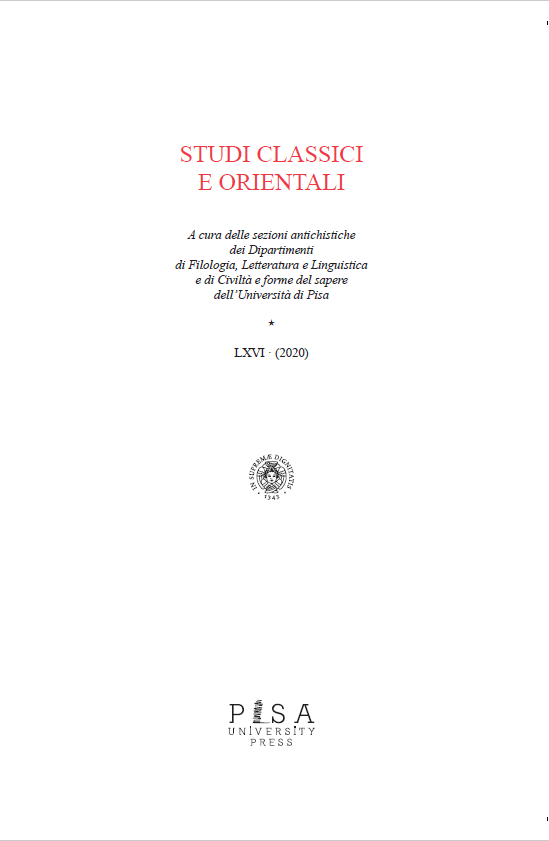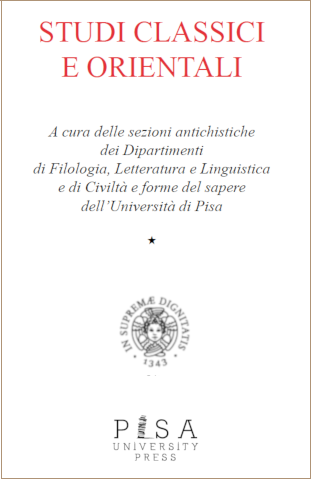L’ipogeo etrusco di Torricchi a Volterra
Parole chiave:
Necropolis, hypogeum, Volterra, EtruscansAbstract
The Torricchi hypogeum, located in the necropolis of Ulimeto in the east part of Volterra, is a large Etruscan tomb carved into the limestone rock, accessible through a little steep dromos provided with steps. It shows a multiple chamber plan composed of a large central rectangular atrium with benches along the walls and, on the back side of the central room, three small rectangular chambers, each with similar benches for burials. Although this monument had already been discovered in the last decades of the 18th century and frequented for a long time, recent archaeological investigations have allowed to discover a layer of earth leveling the base rock with a large number of small sherds inside belonging to the original funerary sets deposed in the hypogeum, dating between the second half of 4th century BC and the half of 2nd century BC. The sherds thus confirm that the tomb hosted several generations of the Etruscan gens who built it. Other Etruscan tombs with multiple chambers, dating to the late-Archaic period, were found in Volterra, especially in the north-west Guerruccia necropolis, and also in the surrounding territory, such as Val d’Elsa, with burials that can be dated between the end of 6th and 5th century BC. Torricchi hypogeum testifies that funerary monuments with complex plan were constructed at least until the Hellenistic age.



